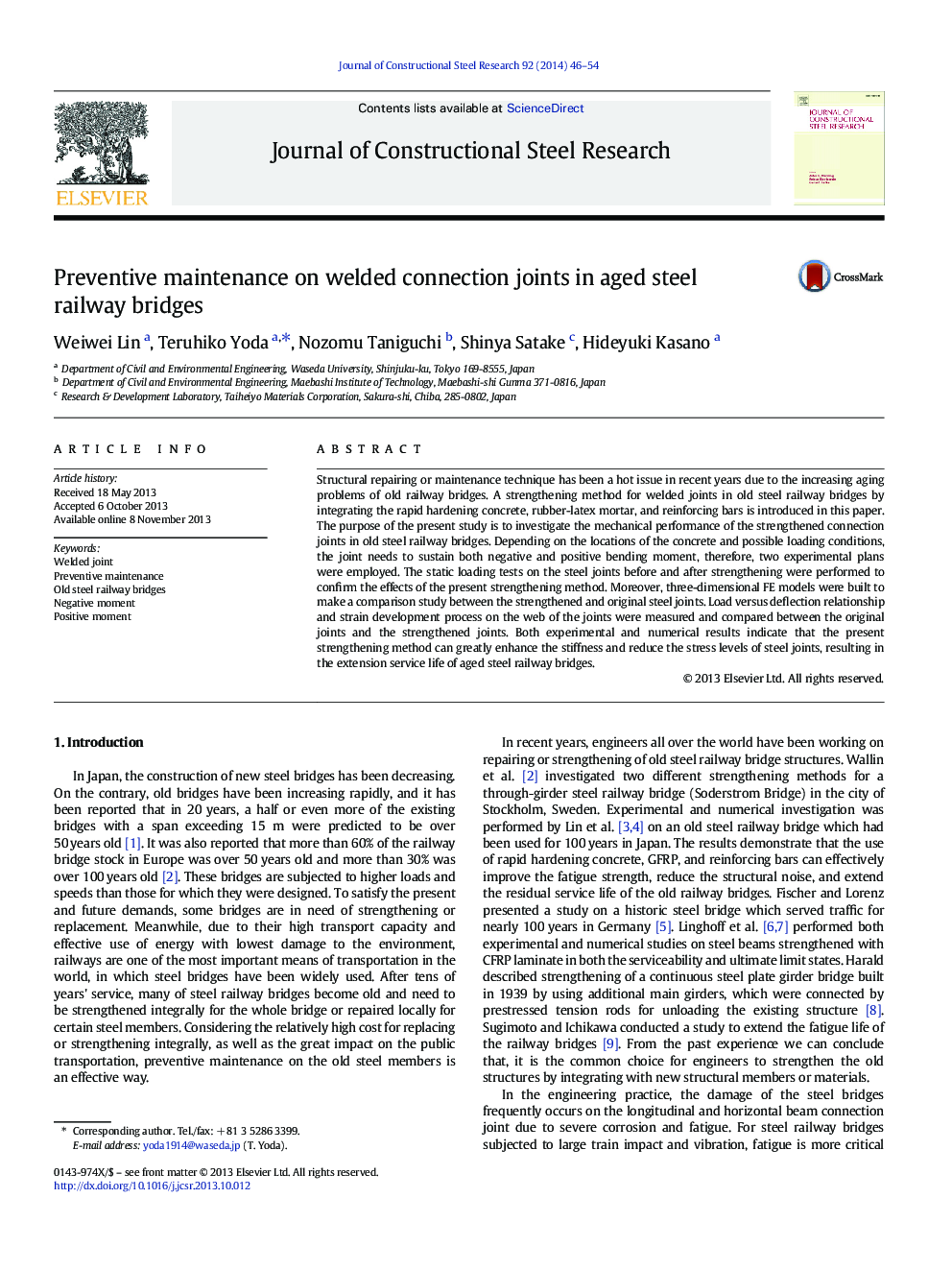| Article ID | Journal | Published Year | Pages | File Type |
|---|---|---|---|---|
| 284815 | Journal of Constructional Steel Research | 2014 | 9 Pages |
•A new strengthening method for welded joints in railway bridges was proposed.•Effects of present strengthening method were confirmed by using test results.•Both positive bending moment and negative bending moment were applied in the test.•Effective numerical modeling method for the present method was investigated.•The performance of rubber-latex and rapid hardening concrete was studied.
Structural repairing or maintenance technique has been a hot issue in recent years due to the increasing aging problems of old railway bridges. A strengthening method for welded joints in old steel railway bridges by integrating the rapid hardening concrete, rubber-latex mortar, and reinforcing bars is introduced in this paper. The purpose of the present study is to investigate the mechanical performance of the strengthened connection joints in old steel railway bridges. Depending on the locations of the concrete and possible loading conditions, the joint needs to sustain both negative and positive bending moment, therefore, two experimental plans were employed. The static loading tests on the steel joints before and after strengthening were performed to confirm the effects of the present strengthening method. Moreover, three-dimensional FE models were built to make a comparison study between the strengthened and original steel joints. Load versus deflection relationship and strain development process on the web of the joints were measured and compared between the original joints and the strengthened joints. Both experimental and numerical results indicate that the present strengthening method can greatly enhance the stiffness and reduce the stress levels of steel joints, resulting in the extension service life of aged steel railway bridges.
